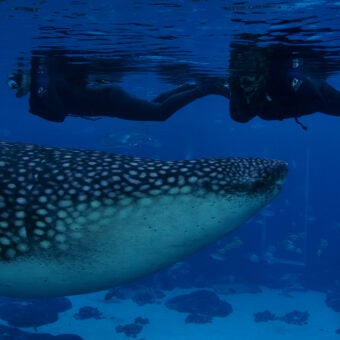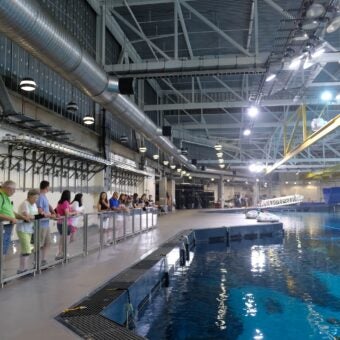-
Size
12 inches (30.5 cm) -
Diet
Algae -
Range
Atlantic ocean -
Habitat
Tropical shallow waters
Physical Characteristics
- Maximum length is 12 inches (30.5 cm).
- Tall-bodied, laterally compressed fish with a pointed snout, small scales and continuous dorsal fin. The eyes are located high on the head. The mouth is small and low on the head. Close-set teeth adapted for grazing algae from the reef.
- As an adult, this tang is deep blue in color with a white or yellow spine on the caudal peduncle (base of the tail fin), a characteristic shared with other surgeon fish. Uses the spine to fend off predators, defend territory and display social dominance.
- Juveniles are mostly bright yellow, sometimes displaying a blue coloring on the edges of the fins, and blue crescents above and below the pupils of the eyes. In the intermediate phase, the color darkens to a bright blue or purplish-gray with a yellow caudal fin.
Animal Fun Fact
The juvenile surgeonfish will set up a cleaning station with sea turtles where they consume dead skin and parasites from their bodies.
Diet / Feeding
- As an adult, blue tangs feed entirely on benthic, or bottom-dwelling, algae.
- Juveniles also consume zooplankton and may act as cleaner fish.
- Serves an important role on the reef in preventing fast-growing algae from overgrowing on coral beds.
- Occasionally forms large aggregations that forage in shallow reefs, grazing on algae. The group tactic overwhelms the defenses of territorial species such as damselfish, which would normally chase off individual tangs.
Range / Habitat
- Occurs in the Western Atlantic from New York and Bermuda to the Gulf of Mexico and Brazil, as well as in the eastern Atlantic near Ascension Island. Extremely abundant around the Virgin Islands.
- Found in tropical shallow waters, coral reefs and inshore grassy or rocky habitats as deep as 130 feet (40 m).
Reproduction & Growth
- Spawning occurs during late afternoon and evening hours. Forms spawning aggregations and travel to the surface, releasing gametes into the open water.
Conservation Status
- “Least Concern” on the IUCN Red List.
Additional Information
- May live in holes and crevices on the reef to shelter themselves from predators at night.
- At night it may display white vertical stripes.
- At Fernando de Noronha Archipelago in the southwestern Atlantic, juveniles hold cleaning stations and pick molted skin and parasites from green turtles.
- The flesh of the blue tang surgeonfish may cause ciguatera poisoning if eaten.







